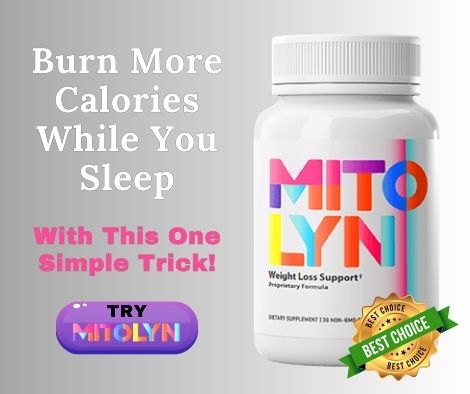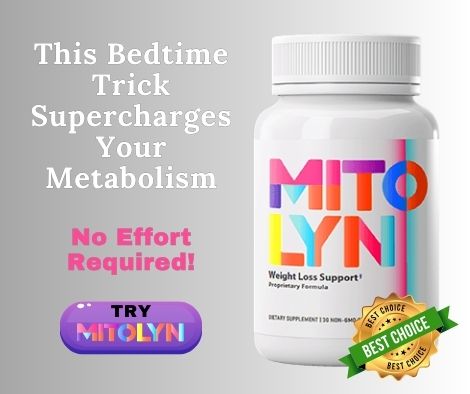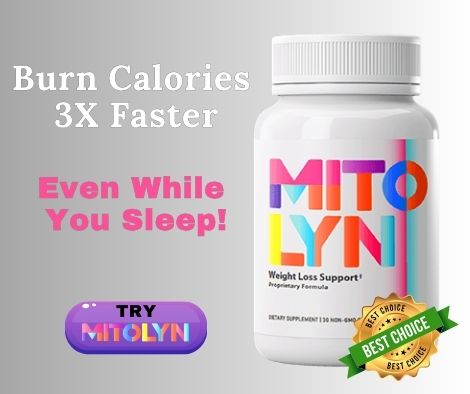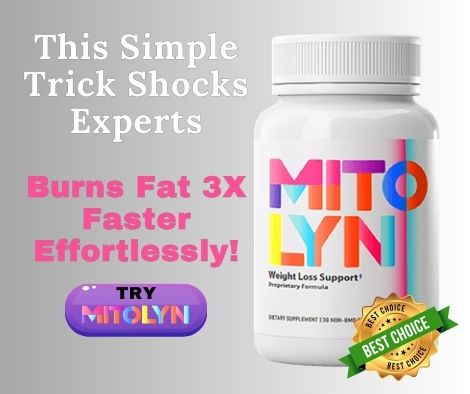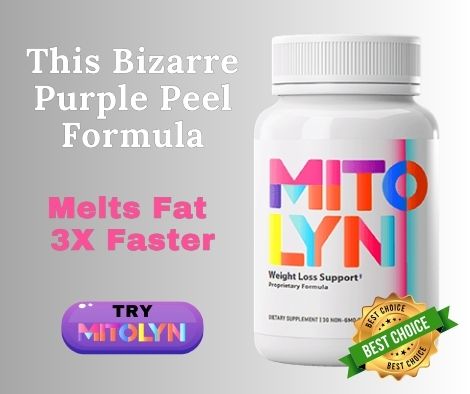Up to 80-90% of how young or old you look for your age comes down to factors within your control—not your genetics. Scientists have proven that sun exposure alone accounts for 80% of visible facial aging signs. Even more startling, by 2050, the number of people aged 60 and older will double to 2.1 billion, with those 80 and older tripling to 426 million. The aging tsunami is real, and it’s happening faster than ever before.
But wait—there’s hope. Research shows that while you can’t stop the aging clock entirely, you can dramatically slow it down. In fact, the difference between aging well and aging poorly often comes down to a handful of hidden factors most people never think about.
I don’t know about you, but some mornings, I look in the mirror and think, When did this happen?! A few more lines around my eyes, a little less bounce in my step. Maybe it’s that stubborn dark spot that wasn’t there last month, or how my joints suddenly have opinions about everything I do. Your energy feels depleted despite a full night’s sleep—like someone secretly drained your battery overnight.
These changes seem to sneak up on us, but the truth is, they’ve been brewing beneath the surface for years—accelerated by hidden culprits right under our noses. They’re in our daily routines, our stress levels, and yes, even hiding on our dinner plates.
The aging process involves far more than the candles on your birthday cake. While genetics play a role, a groundbreaking Oxford study found that environmental factors have a greater effect on diseases of the lung, heart, and liver than genetic risk. This means you have more control over how quickly you age than you might think.
Life expectancy has jumped from 34 years in 1913 to 73.3 years in 2024. But here’s the catch—while we’re living longer, we’re not necessarily aging better. Obesity among Americans 65 and older nearly doubled in a single generation, jumping from 22% to 40%. The good news: Scientists have identified several “secret” factors that dramatically speed up aging at the cellular level—many of which fly under the radar of our daily awareness.
These aging accelerators apply to everyone—regardless of race, gender, or background. The science is universal, and every body benefits from making these changes.
The Hidden Culprit #1: Cellular Senescence – When Your Cells Stop Dividing
Picture your cells as tiny factories that keep your body running smoothly. But what happens when these factories suddenly shut down production? This is cellular senescence—when cells permanently stop dividing but refuse to die off. Research shows that senescent cell accumulation leads to impaired tissue regeneration, chronic inflammation, and fibrosis.
These “zombie cells” stay active despite stopping division. They pump out inflammatory molecules that damage surrounding healthy cells, creating a toxic neighborhood effect. In fact, scientists have discovered that mitochondria, and in particular their calcium levels, have emerged as key regulators of cellular senescence. Think of it like having broken-down cars permanently parked on a busy highway—they take up space and cause traffic jams that affect everything around them.
What accelerates cellular senescence:
Chronic stress and poor sleep quality
Environmental toxins and pollution
Excessive UV exposure
Poor diet high in processed foods (yes, that frozen pizza counts)
Sedentary lifestyle (guilty of Netflix marathons? Me too)
How to combat it:
Exercise regularly: Physical activity helps clear senescent cells naturally. Aim for 150 minutes of moderate exercise weekly, mixing cardio with strength training. Even dancing in the kitchen while cooking dinner counts!
Eat senolytic foods: Quercetin-rich foods like apples, onions, and green tea help eliminate senescent cells. Strawberries, cucumbers, and persimmons contain fisetin, another powerful senolytic compound.
Practice intermittent fasting: Time-restricted eating (16:8 pattern) triggers cellular cleanup processes that remove damaged cells.
Prioritize quality sleep: Your body performs crucial cellular maintenance during deep sleep phases. Try that calming bedtime routine—maybe a good book and dimmed lights?
The Sweet Saboteur #2: Glycation – When Sugar Attacks Your Collagen
Remember the last time you watched sugar caramelize in a pan? That same browning reaction happens inside your body when sugar molecules bind to proteins—a process called glycation. Research confirms that the glycation process leads to a loss of protein function and impaired elasticity of tissues such as blood vessels, skin, and tendons.
This creates Advanced Glycation End Products (AGEs)—appropriately named because they literally age you from the inside out. Studies show AGEs accumulate in the skin with age and are amplified through exogenous factors, e.g., ultraviolet radiation, resulting in wrinkles, loss of elasticity, dull yellowing, and other skin problems.
Your morning donut spikes your blood sugar while launching a molecular attack on your collagen fibers. These sugar-damaged proteins become stiff and malformed, like springs that have lost their bounce. You’ll see premature wrinkles, sagging skin, and that telltale loss of youthful plumpness. I’ll be the first to admit that a sugary snack sometimes feels like the perfect solution after a long day, but sugar is sneaky—it damages collagen and elastin, the proteins that keep your skin firm and youthful.
Hidden sources of glycation:
Foods cooked at high temperatures (grilled, fried, roasted)
Sugary beverages and hidden sugars in “healthy” foods
Refined carbohydrates that spike blood sugar
Excessive fruit juice consumption
Processed foods with high fructose corn syrup
Your anti-glycation strategy:
Cook smarter: Water-based cooking methods such as boiling and steaming produce fewer AGEs than grilling or frying.
Load up on antioxidants: Vitamin C, vitamin E, and alpha-lipoic acid help prevent glycation reactions. Foods like blueberries, spinach, and almonds help neutralize those free radicals—it’s like giving your body a little superhero squad to combat the aging villains.
Choose low-glycemic foods: Opt for whole grains, legumes, and vegetables that release sugar slowly. Even small changes, like swapping out sugary snacks for a handful of almonds or berries, can do wonders for your skin, energy, and overall health.
Spice it right: Cinnamon, turmeric, and oregano contain compounds that inhibit AGE formation.
Stay hydrated: Proper hydration helps flush out glycation byproducts. Keep a water bottle handy throughout the day as a reminder to sip regularly.
The Energy Crisis #3: Mitochondrial Dysfunction – When Your Cellular Batteries Die
Mitochondria are your cells’ power plants, converting nutrients into energy. But as you age, these tiny generators start sputtering. Studies reveal that mitochondrial dysfunction has been reported to be associated with aging and almost all chronic aging-associated diseases through reduced ATP production, alteration in the regulation of apoptosis, increased ROS production, and defective calcium signaling.
Imagine trying to run a marathon with half-dead batteries in your legs. That’s what your cells experience when mitochondria malfunction. Research shows that in aged subjects, mitochondria are characterized by impaired function such as lowered oxidative capacity, reduced oxidative phosphorylation, decreased ATP production, significant increase in ROS generation, and diminished antioxidant defense.
Signs your mitochondria need help:
Persistent fatigue despite adequate rest
Brain fog and difficulty concentrating
Muscle weakness or cramping
Slow recovery from exercise
Increased susceptibility to infections
Mitochondrial rescue plan:
Move your body: High-intensity interval training (HIIT) stimulates mitochondrial biogenesis—literally creating new power plants.
Cold exposure: Brief cold showers or ice baths trigger mitochondrial adaptation and efficiency.
Nutrient support: CoQ10, PQQ, and NAD+ precursors directly support mitochondrial function.
Eat the rainbow: Colorful vegetables provide polyphenols that protect mitochondria from damage.
Practice breathwork: Deep breathing exercises improve mitochondrial oxygen utilization.
The Silent Fire #4: Chronic Inflammation (Inflammaging)
While acute inflammation helps heal wounds, chronic low-grade inflammation is like a slow-burning fire that damages everything in its path. Research confirms that inflammaging is a highly significant risk factor for both morbidity and mortality in the elderly people, as most if not all age-related diseases share an inflammatory pathogenesis.
This invisible, systemic inflammation persistently elevates pro-inflammatory factors such as CRP and IL-6, which cause endothelial damage and lipid deposition in cardiovascular disease. Long-term inflammation can wear your body down and make you feel older than your years.
Inflammation triggers hiding in plain sight:
Processed and ultra-processed foods (I’m looking at you, frozen pizza nights)
Chronic stress and poor stress management
Disrupted sleep patterns
Environmental toxins and air pollution
Sedentary lifestyle
Social isolation and loneliness
Your anti-inflammatory action plan:
Omega-3 power: Wild-caught fatty fish, walnuts, and flaxseeds provide inflammation-fighting omega-3s.
Spice therapy: Turmeric with black pepper, ginger, and garlic actively reduce inflammatory markers. Anti-inflammatory foods like turmeric, fatty fish, and leafy greens can make a huge difference.
Stress mastery: Regular meditation, yoga, or tai chi lower cortisol and inflammatory cytokines. I know it’s easier said than done, but finding ways to manage stress is key. Whether it’s taking 10 minutes for yourself to meditate, going for a walk, or just sitting quietly with a cup of tea, it all helps.
Social connection: Strong relationships and community involvement reduce inflammation markers.
Forest bathing: Time in nature significantly reduces inflammatory stress hormones. Switch sitting in front of the TV for spending more time outdoors.
The Protective Caps #5: Telomere Shortening – Your Cellular Countdown Clock
Telomeres are like the plastic tips on shoelaces—they protect your chromosomes from fraying. Each time your cells divide, these protective caps get shorter. Research confirms that telomere shortening is a well-known hallmark of both cellular senescence and organismal aging. Among people older than 60, those with shorter telomeres were three times more likely to die from heart disease and eight times more likely to die from infectious disease.
When telomeres become critically short, cells can no longer divide properly. Studies show that several human conditions associated with normal ageing are precipitated by accelerated telomere dysfunction, including cardiovascular disease and neurodegeneration.
Telomere destroyers:
Chronic psychological stress
Poor sleep quality
Sedentary behavior
Smoking and excessive alcohol
Obesity and metabolic dysfunction
Eating disorders like anorexia and bulimia can deprive your body of the nutrients it needs to keep your hormone levels balanced
Telomere protection protocol:
Stress resilience: Mindfulness meditation has been shown to increase telomerase activity, the enzyme that maintains telomeres.
Exercise sweet spot: Moderate exercise protects telomeres; excessive exercise may damage them.
Mediterranean magic: This dietary pattern consistently associates with longer telomeres.
Sleep sanctuary: Aim for 7-9 hours of quality sleep to support telomere maintenance.
Vitamin D: A groundbreaking study found that taking vitamin D3 supplements significantly reduced telomere shortening over four years, preventing the equivalent of nearly three years of aging.
The Hormonal Havoc #6: Age-Related Hormone Decline
Your hormones orchestrate nearly every function in your body. But as you age, this symphony starts playing out of tune. Research shows that with aging, men often have a lower level of testosterone. Women have lower levels of estradiol and other estrogen hormones after menopause.
For women, around age 50, women’s ovaries begin producing decreasing amounts of estrogen and progesterone, leading to various symptoms that accelerate aging. Men experience a 1-3% yearly decline in testosterone levels starting around age 35-40.
Hormone imbalance accelerators:
Chronic stress depleting hormone reserves
Poor sleep disrupting hormone production
Nutrient deficiencies (especially vitamin D, zinc, magnesium)
Environmental endocrine disruptors
Excessive body fat increasing estrogen
Over-exercising suppressing hormones
Hormone optimization strategies:
Strength training: Resistance exercise naturally boosts testosterone and growth hormone.
Healthy fats: Avocados, nuts, and olive oil provide building blocks for hormone production.
Stress management: Chronic stress decimates hormone balance—prioritize relaxation.
Sleep optimization: Most hormone production happens during deep sleep.
Limit endocrine disruptors: Choose organic produce and avoid plastic food containers.
The Sleep Thief #7: Circadian Rhythm Disruption
Your internal clock coordinates thousands of biological processes beyond sleep timing. But modern life wreaks havoc on this ancient timekeeper. Studies show that older adults experience significantly more wakenings, have longer latencies to fall asleep, and spend less time in stage 3, stage 4, and rapid eye movement (REM) sleep compared with younger adults. Van Cauter and colleagues estimate these disruptions lead to a loss of approximately 30 minutes of sleep every 10 years, beginning in the fourth decade of life.
Age-related changes in circadian rhythms or circadian sleep regulation may underlie the sleep timing and consolidation changes seen in aging. Poor sleep accelerates every aspect of aging. Sleep is like a magical time machine for your body. It’s when your cells repair themselves, your skin rejuvenates, and your energy resets. But when you lack sufficient rest, your body misses out on all that good stuff.
Circadian disruptors:
Blue light exposure after sunset (guilty of late-night scrolling? Same here)
Irregular sleep schedules
Late-night eating
Shift work or jet lag
Caffeine after 2 PM
Bedroom temperature too warm
Circadian restoration plan:
Morning light therapy: 10-30 minutes of bright light exposure within an hour of waking.
Evening wind-down: Dim lights 2 hours before bed; use blue light blocking glasses.
Temperature hacking: Keep bedroom cool (65-68°F) to support natural temperature drop.
Consistent schedule: Same bedtime and wake time, even on weekends.
Melatonin support: Consider low-dose melatonin (0.5-3mg) 2-3 hours before desired bedtime.
The Toxic Load #8: Environmental Pollutants – The Invisible Agers
Every day, you’re exposed to thousands of chemicals that didn’t exist 100 years ago. A 2025 Stanford study found that cadmium, lead, and cotinine are linked to faster biological aging, a process that can increase the risk of age-related diseases. People with higher cadmium levels showed signs of accelerated aging equivalent to several years.
Research confirms that environmental pollutants exposure could lead to accelerated telomere erosion and further induce premature senescence, which may be responsible for the acceleration of aging and the high morbidity and mortality rates of age-related diseases.
Hidden toxin sources:
Indoor air pollution (often worse than outdoor)
Pesticides on conventional produce
Heavy metals in fish and contaminated water
BPA and phthalates in plastics
Flame retardants in furniture
Personal care products with harmful chemicals
Detox and protection strategies:
Clean air: Use HEPA filters; keep houseplants that purify air.
Clean water: Install quality water filters for drinking and showering. Find a best-selling countertop water filter nad shower filter.
Clean food: Choose organic for the “Dirty Dozen” produce items.
Clean products: Switch to natural cleaning and personal care products.
Support detox: Cruciferous vegetables, cilantro, and chlorella help eliminate toxins.
Sweat it out: Regular sauna or infrared blanket use helps excrete heavy metals through sweat.
The Modern Menace #9: Blue Light Exposure – Digital Aging
Your devices emit high-energy blue light that penetrates deep into your skin. Studies confirm that blue light from electronic devices can lead to changes in your skin cells, including cell shrinkage and death. These speed up the aging process.
Research shows that blue light can stimulate photo-ageing and over time lead to skin discoloration, inflammation, and a weakened skin surface. With average screen time now exceeding 6.5 hours daily (even more for Gen Z), this hidden ager affects virtually everyone.
Blue light damage sources:
Smartphones held close to face
Computer screens during work hours
LED lighting in homes and offices
Television viewing in dark rooms
Tablets used before bed
Digital defense strategies:
Screen protection: Blue light filtering screen protectors and glasses.
20-20-20 rule: Every 20 minutes, look at something 20 feet away for 20 seconds.
Night mode: Enable on all devices after sunset, and consider wearing blue light blocking glasses for added protection.
Physical sunscreen: Mineral sunscreens with zinc oxide protect against blue light.
Antioxidant skincare: Vitamin C and vitamin E help neutralize blue light damage.
The Ultimate Ager #10: Sun Damage (Photoaging)
While some sun exposure provides vital vitamin D, chronic UV exposure is the single biggest external aging factor. Studies have proven that up to 80-90% of how young or old you look for your age is due to how much sun exposure you’ve sustained. L’Oreal Research found that the sun’s ultraviolet radiation is responsible for 80 percent of facial aging signs including wrinkling, dryness, sagging and spotty pigmentation.
Research shows that UVA rays penetrate deep into the dermis, where they damage the collagen fibers. This damage causes increased production of abnormal elastin, leading to wrinkles, age spots, and leathery skin texture. Responsible for 90 percent of visible changes to the skin, photoaging is a direct result of cumulative sun damage throughout your life.
Photoaging accelerators:
Unprotected sun exposure during peak hours
Tanning beds and sun lamps
Reflective surfaces (water, snow, sand)
High altitude exposure
Forgetting to reapply sunscreen
Neglecting often-missed areas (ears, hands, neck)
Comprehensive sun protection:
Broad-spectrum SPF 30+: Apply generously 15 minutes before sun exposure. See the top-rated mineral sunscreen here.
Reapply religiously: Every 2 hours, or after swimming/sweating.
Protective clothing: UPF-rated fabrics, wide-brimmed hats, sunglasses.
Shade seeking: Especially between 10 AM - 4 PM.
Antioxidant boost: Vitamin C serum under sunscreen enhances protection.
Repair support: Retinoids and niacinamide, also pure aloe vera gel, and DMSO cream help reverse existing damage.
Bonus: The Cutting-Edge Anti-Aging Molecule – NAD+
Here’s something that’s creating major buzz in 2025: NAD+ supplements. This coenzyme, found naturally in every cell of your body, plays a critical role in energy production and DNA repair. But here’s the kicker—NAD+ levels can drop by nearly 50% by the time you hit your 40s. Harvard aging expert Dr. David Sinclair claims “somebody who might make it to 150 has already been born,” and he credits NAD+ as one of the key molecules in his anti-aging protocol.
Recent research shows that NAD+ precursors like NMN (nicotinamide mononucleotide) and NR (nicotinamide riboside) can:
Improve cardiovascular health and reduce arterial stiffness
Enhance muscle function and endurance
Support brain health and cognitive function
Help repair UV-damaged skin
Reduce chronic inflammation
A groundbreaking 2025 study even showed that NR supplementation reversed multiple symptoms of premature aging in Werner syndrome patients. While celebrities like Jennifer Aniston and Hailey Bieber swear by expensive NAD+ IV drips (costing upwards of $1,000), experts say oral supplements are safer and more practical.
Should you try it? The research is promising but still evolving. If you’re considering NAD+ supplements, talk to your doctor first, especially if you have a history of cancer. Focus on foundational anti-aging strategies—they’re proven, free, and powerful.
The Hidden Agers #11 – Overmedicating
Modern medicine saves lives, but today’s aging epidemic has a hidden culprit: the overuse of prescription and over-the-counter medications. Many people routinely take antacids for heartburn, painkillers for headaches and joint aches, sleep aids for insomnia, and antibiotics for infections—sometimes for years without pause. While these drugs provide short-term relief, long-term use often comes with hidden costs that quietly accelerate aging.
How Overmedicating Speeds Up Aging:
Nutrient Depletion: Many common drugs, including acid blockers (like omeprazole or ranitidine), metformin, statins, and certain diuretics, rob your body of essential nutrients—magnesium, vitamin B12, calcium, and zinc. These deficiencies can sap your energy, weaken bones, impair memory, and dull your skin and hair.
Microbiome Damage: Frequent antibiotics, antacids, and even NSAIDs (like ibuprofen) disrupt the gut’s delicate balance, killing beneficial bacteria that support immune strength, hormone balance, and clear skin. A damaged microbiome is linked to faster aging throughout the body.
Mitochondrial Stress: Some medications increase oxidative stress and reduce the energy output of your cells’ “power plants” (mitochondria), speeding up fatigue and tissue breakdown.
Rebound Effects: Over time, your body can become dependent on certain medications, leading to worse symptoms if you stop suddenly—chronic heartburn after antacid withdrawal, or sleeplessness after quitting sleep aids.
Masked Warning Signs: Relying on meds to quiet symptoms can hide early signs of serious issues, making it easy to miss the root causes that need real attention.
How to Protect Yourself:
Review Your Medications: Regularly check all prescriptions and over-the-counter drugs with your healthcare provider, especially if you’re taking multiple long-term. Ask: “Do I still need this? Is there a safer or natural alternative?”
Focus on Root Causes: For common complaints like heartburn, headaches, or sleep trouble, address underlying triggers—diet, hydration, stress, and nutrient status—before reaching for a pill.
Support Your Gut: If you need antibiotics or antacids, support your microbiome with probiotic-rich foods (like kefir, yogurt, sauerkraut, kimchi) and consider a quality probiotic supplement.
Nutrient Replenishment: Talk to your provider about checking and supplementing key nutrients depleted by your meds—especially B12, magnesium, vitamin D, and zinc.
Be Wary of Polypharmacy: The risk of drug interactions and side effects multiplies with every added medication, especially after age 60. Less is often more when it comes to longevity.
Medications have their place, but using them as a crutch can accelerate aging, deplete your energy, and mask the body’s early warning signals. Aim to minimize long-term use, address root causes, and treat your body with the care it deserves.
Quick Reference: The Top 11 Aging Accelerators

Cellular Senescence – Zombie cells that refuse to die
Glycation – Sugar attacking your collagen
Mitochondrial Dysfunction – Cellular batteries dying
Chronic Inflammation – The silent fire within
Telomere Shortening – Your cellular countdown clock
Hormonal Decline – The symphony going out of tune
Circadian Disruption – Your broken internal clock
Environmental Toxins – The invisible agers
Blue Light Exposure – Digital aging from screens
Sun Damage – The ultimate external ager
Overmedicating – Accelerated aging from unnecessary or long-term medication use
Red Flags: When to See a Doctor
While many aging signs are normal, some warrant immediate medical attention:
Sudden, dramatic changes in appearance or energy
Unexplained weight loss or gain
Persistent fatigue despite adequate sleep
Memory problems affecting daily life
Skin changes that bleed, itch, or change color
Chronic pain or inflammation
Hormonal symptoms severely impacting quality of life
### Your Personalized Anti-Aging Action PlanKnowledge without action is just trivia. Here’s how to implement these strategies:
Week 1-2: Foundation Building
Establish a consistent sleep schedule
Begin a basic sun protection routine
Add one anti-inflammatory food daily
Start 5-minute morning light exposure
Week 3-4: Momentum Building
Introduce intermittent fasting (12:12)
Add strength training 2x/week
Switch to low-glycemic meal planning
Install blue light filters on devices
Month 2: Acceleration
Expand fasting window (14:10 or 16:8)
Increase exercise intensity
Begin a stress management practice
Audit and replace toxic products
Month 3 and Beyond: Optimization
Fine-tune all protocols based on results
Consider targeted supplementation
Track biomarkers of aging
Build a community support system
Bonus Factors Worth Watching
Poor Gut Health: Your gut affects everything, including your skin and immune system. Adding probiotics (yogurt, fermented foods) and fiber to your diet supports healthy aging.
Inherited Habits: Genetics influence some traits, but habits drive aging. The eating, exercising, and stress patterns you grew up with tend to follow you. You can break the cycle and create new patterns.
Alcohol Consumption:_ Alcohol dehydrates your skin and strains your liver, both of which speed up aging. Enjoy in moderation, and hydrate if you do indulge.
The Money-Saving Truth About Anti-Aging
Before you drop hundreds on the latest “miracle” cream or thousand-dollar treatments, consider this: The most powerful anti-aging strategies cost little to nothing. Walking is free. Sleep is free. Meditation apps have free versions. Whole foods often cost less than processed alternatives. Even vitamin D supplements—shown to prevent three years of cellular aging—cost just pennies per day.
The global anti-aging market is projected to reach $83.2 billion by 2027, but you don’t need to contribute to those profits to age well. Focus on the basics first. They’re not just cheaper—they’re more effective than any luxury serum or celebrity-endorsed treatment.
### Quick Wins: Things You Can Start TodayRight Now: Step outside for 5 minutes of natural light and movement. (Boosts mood, supports circadian rhythm.)
At Your Next Meal: Add a colorful vegetable or a handful of berries you don’t usually eat. (More antioxidants, less glycation.)
Before Bed: Put your phone on night mode, then put it away 30 minutes earlier than usual. (Less blue light, deeper sleep.)
First Thing Tomorrow: Drink a full glass of water before your coffee. (Rehydrates, supports cellular function.)
This Weekend: Buy a physical sunscreen (SPF 30+) and keep it by your door. (Daily protection from sun damage.)
Any Day: Try 3 minutes of deep breathing or stretching before bed. (Lowers inflammation, calms the mind.)
Every Sunday: Prep veggie snacks for the week. (Makes healthy choices easy and visible.)
Try These Next
Rotate your vegetables. Pick one you rarely eat and add it to your next meal for fresh nutrients.
Walk for 5 minutes after dinner. Supports digestion and blood sugar balance.
Set a phone-free hour in the evening. More real rest, less blue light.
Prep healthy snacks for the week. Keep cut-up veggies and fruit ready in the fridge.
Reach out to a friend or relative. Even a short call lifts mood and supports longevity.
Lower your bedroom temperature tonight. Cooler sleep helps your body recover and balances hormones.
Practice deep breathing before bed. Three slow breaths calm your mind and prepare you for restful sleep.
What to Do When You Slip Up
Everyone misses a workout or eats dessert. Progress comes from what you do next—not perfection.
Reset: Get back on track with your next meal, workout, or sleep.
Reflect: Notice triggers—stress, fatigue, boredom? Adjust your routine.
Reward: Celebrate small wins, not just “perfect” days.
Remind: One misstep won’t ruin your progress—consistency wins in the long run.
Lab Tests Worth Considering
Tracking your progress with lab work can help you catch aging accelerators early. Ask your doctor about these tests:
hs-CRP (high sensitivity C-reactive protein): Measures chronic inflammation
Homocysteine: Related to heart and brain health
Vitamin D, B12, Iron, and Magnesium levels: Key nutrients for cell health
Fasting Insulin and HbA1c: Reveal blood sugar and metabolic health
Thyroid panel: TSH, Free T4/T3, Reverse T3
Hormones: Testosterone, estradiol, DHEA (especially over 40)
Liver and kidney function panels
Lipid profile: HDL, LDL, triglycerides
Optional: Telomere length testing (specialized labs, not routine, but possible)
FAQ: Anti-Aging Answers
Q: What’s the single best anti-aging strategy?
A: Consistency. Daily habits (sleep, nutrition, movement, and sun protection) have a bigger effect than any product.
Q: Can supplements really slow aging?
A: They help, but only as part of a healthy routine. Prioritize diet, sleep, and stress management first.
Q: How soon will I see results?
A: Some people feel more energy in days; visible results (skin, strength, mood) often take weeks to months.
Q: Should I get hormone therapy?
A: It depends. Work with a qualified healthcare provider and optimize lifestyle habits first.
Q: How do I know if a product is worth it?
A: Look for evidence-backed ingredients, read independent reviews, and prioritize basics before advanced products.
Q: Are NAD+ and NMN supplements safe?
A: Generally, they’re well-tolerated, but long-term effects are still being studied. Consult your healthcare provider.
Q: Does this advice work for everyone?
A: Yes. The root causes of aging act across all backgrounds. Healthy habits benefit every age, race, and gender.
Myth vs. Truth: Anti-Aging Edition
Myth: You need expensive creams and treatments to slow aging.
Truth: The most effective anti-aging strategies—like sleep, movement, and diet—cost little or nothing.
Myth: Aging is all about genetics.
Truth: Up to 90% of aging signs are driven by daily choices, not your DNA.
Myth: Supplements alone can reverse aging.
Truth: No pill can replace consistent habits. Supplements can help—but they work best with healthy routines.
Myth: Only women need to worry about aging skin and hormones.
Truth: Men experience hormonal decline, muscle loss, and increased disease risk as they age too.
Tools and Apps for Tracking Your Anti-Aging Progress
Sleep: Sleep Cycle, Oura Ring, WHOOP
Movement: Pedometer, Fitbit, Google Fit, Apple Health
Nutrition: Cronometer, MyFitnessPal, Yazio
Blue Light: f.lux (desktop), Night Shift (iOS), Twilight (Android)
Mindfulness & Stress: Headspace, Calm, Insight Timer
Circadian Rhythm: Timeshifter, SleepTown
The Bottom Line: Small Changes, Big Impact
Aging is a part of life, but how fast it happens is often within our control. These hidden factors work synergistically—addressing one improves others. When you reduce inflammation, you sleep better. When you sleep better, your hormones balance. When hormones balance, you have more energy for exercise. It’s an upward spiral of vitality.
The most powerful anti-aging tool comes from consistency, not expensive creams or supplements. Small daily choices compound over time. That morning walk, that colorful salad, that early bedtime—they’re investments in your future self. Focus on feeling good in your skin, no matter your age.
You’re optimizing your biology to feel vibrant, energetic, and healthy at every age. Start with one change today. Your cells will thank you tomorrow, and your future self will thank you in decades to come.
So let’s be kind to ourselves and our bodies. Whether you start with a simple habit like staying hydrated or carve out more time for sleep, every little step adds up. Here’s to aging gracefully—and feeling fabulous along the way!
While aging is inevitable, the rate at which you age is largely within your control. By addressing these eleven hidden factors—from cellular senescence to overmedicating—through consistent daily habits, you can slow the aging process, maintain vitality, and potentially add years of healthy life. Start small, be consistent, and remember that every positive choice is an investment in your future self. Making small, intentional changes to your daily routine can help slow down the clock and keep you feeling energetic, vibrant, and youthful.
Disclosure:
As an Amazon Associate, I earn from qualifying purchases. This means that if you click on links to Amazon products in this article and make a purchase, I may receive a small commission at no extra cost to you. Thank you for supporting this site and the work that goes into providing trusted health information.

